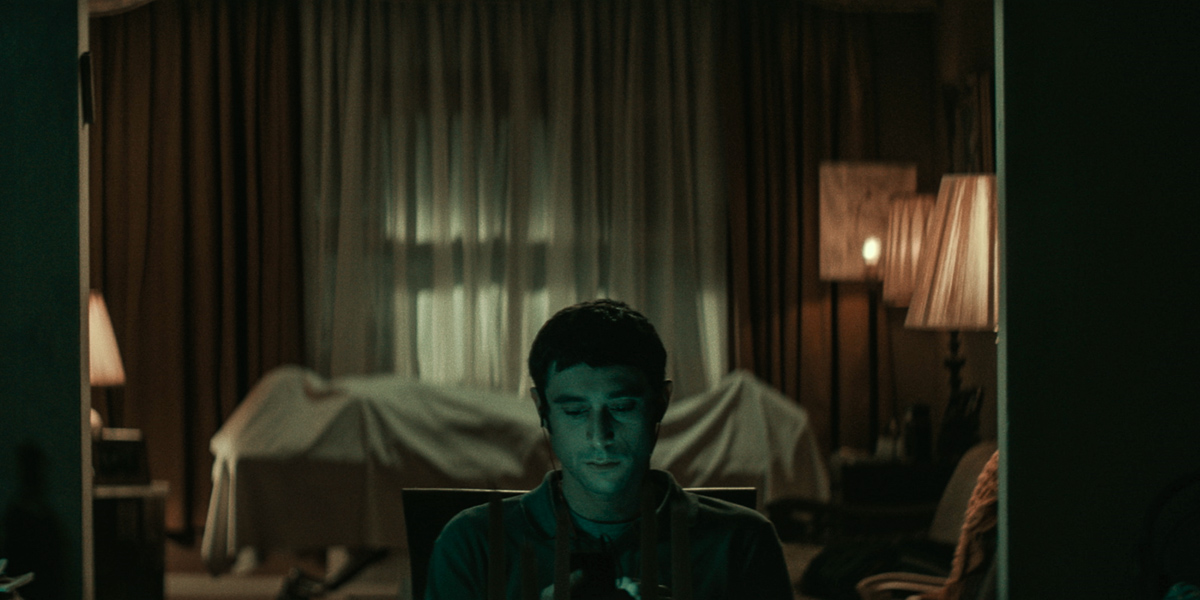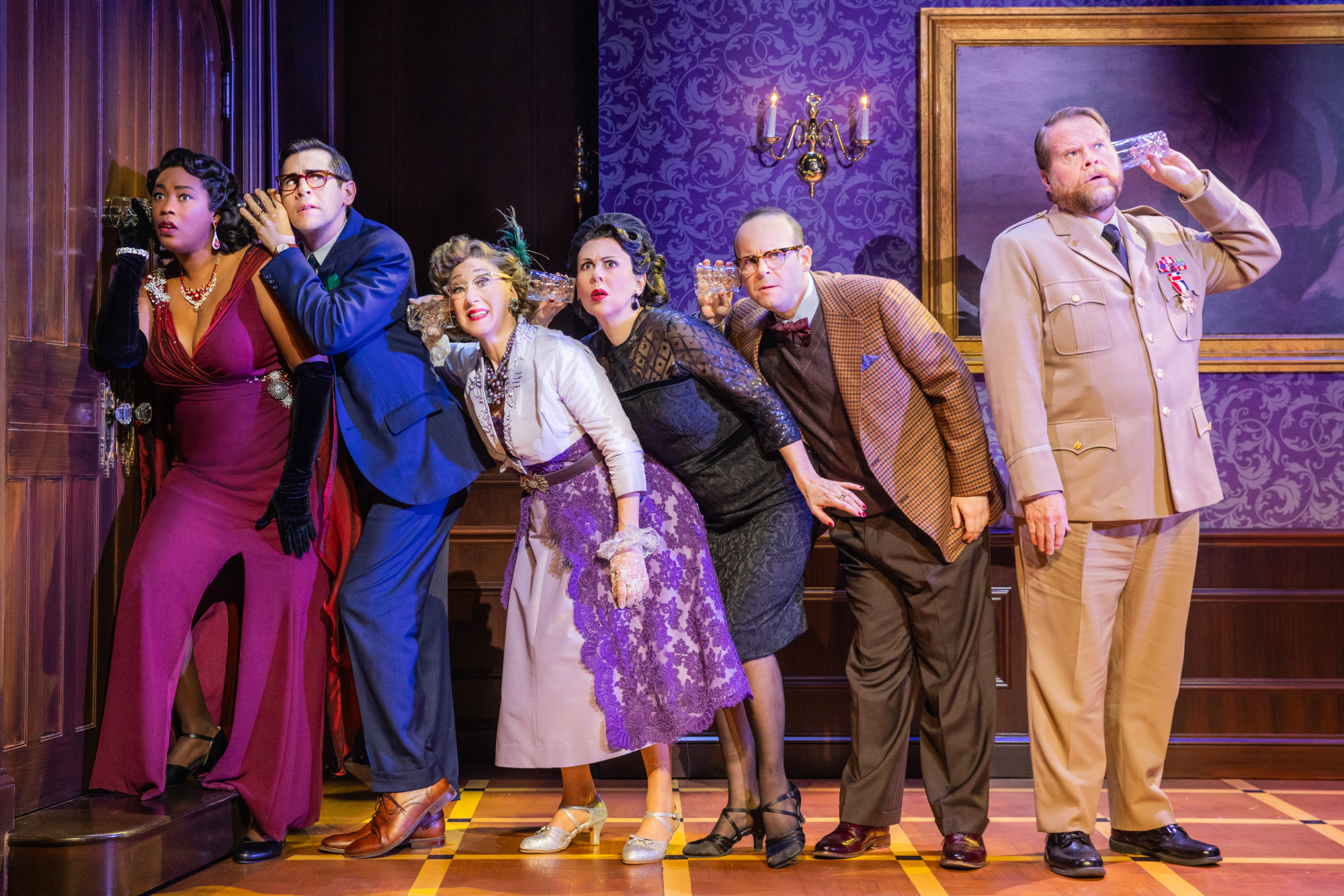Reviews
[TIFF Review] ‘The Vigil’ Introduces a New Kind of Jewish Horror

One of the joys of watching horror films is the discovery. A new director or star. An unexpected scare. A twist on a familiar convention that renders a trope fresh and exciting again.
Thus far at TIFF, Blood Quantum has already introduced Indigenous identity and (Canadian) history into the zombie subgenre. Now, with The Vigil, there’s a fresh take on the religious/demon possession horror film.
The Vigil is rooted in the Jewish practice of Shimera, which involves watching over the body of a deceased person from death to burial. The goal is to comfort the soul and ensure it doesn’t become confused and stray too far from the body before going to its new home in the ground. The individual who does the watching is Shomer (male) or Shomeret (female) and, in the event that a family member is unavailable, it is not uncommon to pay someone to assume this duty.
This practice is explained in the film’s opening scroll as an aperitif to set the stage, but also to help educate the goys in the audience who may be unfamiliar with Jewish tradition (here I should thank Lindsay Traves for her help clarifying some of the film’s visual iconography for me).
The Vigil, written and directed by Keith Thomas, is set over the course of a single night as Yakov (Dave Davis), a paid Shomer, watches over the corpse of recently deceased Holocaust survivor Mr. Litvak. The film opens at a Footsteps meeting, an organization that helps former Orthodox Jews adjust to the secular world. A cursory introduction, presented in a slowly rotating 360 shot, outlines some of the struggles that they may encounter, which helps to establish not only the stakes, but also ground the film in a lived experience that many in the audience may be unfamiliar with.
Immediately upon exiting the apartment where the meeting was held, Yakov is half guilt-tripped/half-enticed into the Shomer job at the behest of his strong-willed cousin (Menashe Lustig). The man knows that he can prey on Yakov because the young man is financially compromised: in the wake of a tragedy (glimpsed sporadically in flashback), Yakov has lost his faith and left his Hasidic Jew community, but he is struggling to adapt to modern technology and every day activities such as finding a job. When the opportunity for paid work presents itself, he can’t afford to turn it down.
Of course, because this is a horror film, there is a reason why it has been so difficult to find a Shomer, and why the widow Litvak (Lynn Cohen) is acting a little odd, and why Jovak keeps experiencing odd hallucinatory sights and sounds. He is not alone with Mr. Litvak’s corpse; there is a dybbuk (Yiddish for evil spirit) lurking about, seeking to raise a little hell.
Like other horror films, The Vigil uses a crisis of religious faith as an outlet for horror (The Exorcist obviously comes to mind, but even more recently Saint Maud). In this case, Jakov’s past has left him vulnerable: both to his cousin, but also to the evil spirit. He tries to run – first by metaphorically leaving his faith behind, and later, quite literally by attempting to leave the house. Inevitably, however, he is forced to return and face his demons (be it grief, or a literal demon).

Director Thomas has explained that even he regards the horror aspects of The Vigil “traditional”, in that he uses jump scares and musical stingers to generate scares. The presence of an unusual corpse, a fixed setting, and an all-night time frame feels very reminiscent of former Midnight Madness film, The Autopsy of Jane Doe (the two films would make for an exceptional double bill). So aside from a truly ear-shattering soundtrack and a brilliant lighting scheme that casts ominous shadows in every corner, The Vigil stands out from its religious horror brethren principally because it offers a previously unseen glimpse into a specifically Jewish practice.
In the climax, rather than recite a prayer in Latin or wield a cross for protection, Jakov arms himself for battle by fastening the tefillin (black cubic boxes with leather straps) on his head and wrapping his arm. As he advances on the dybbuk, he recites the shema, a Jewish prayer expressing ardent faith and love of God that is spoken daily at morning and evening services. Seeing and hearing characters wield icons of faith and words of religious belief is a familiar convention in religious horror films, but here the familiar practice is rendered unique and fascinating because it is so rarely showcased onscreen.
The Vigil doesn’t exactly break the mould of demonic spirit films, though its sound design, lighting and lead performance certainly make it a solid entry. As an alternative to standard (and stale) Catholic religious horror, however, this feels like a breath of fresh air.

Reviews
‘Clue: A New Comedy’ Stage Play Is a Slapstick Slasher That Lovingly Adapts Hasbro’s Board Game

The national tour of ‘Clue: A New Comedy’ remixes the classic murder mystery with farcical physical comedy and impassioned old-fashioned sensibilities.
“It’s all part of the game.”
There’s a strong relationship between mischievous murder mysteries and the horror genre. Murder mysteries inherently hinge upon death – it’s baked into the name – so it’s not surprising that horror has embraced this secretive subgenre and really emphasized the murder in murder mysteries. Murder mysteries have been popular in pop culture for nearly a century. However, there’s been a recent renaissance on this front with playful films like Knives Out, A Haunting in Venice, Bodies Bodies Bodies, the Scream franchise, and the prominence of the true-crime genre and armchair detectives. That being said, an underrated and evergreen source of murder mystery hijinks that’s entertained audiences for 75 years is Hasbro and Parker Brothers’ Clue.
Clue has experienced many permutations over the years, including Jonathan Lynn’s 1985 cult classic film and several stage adaptations. In a new dawn where board game and toy IP are at an all-time high, a new stage adaptation of Clue has been put together by Sandy Rustin, with additional material by Hunter Foster and Eric Price, and directed by Casey Hushion. Hushion’s Clue: A New Comedy, which is in the middle of a national tour, effortlessly harkens back to vaudevillian silliness and broad laughs, while it simultaneously explores darker genre impulses and intrigue. It’s the perfect way to nostalgically celebrate the ’80s movie, but also remind audiences why Hasbro’s upcoming cinematic remake is long overdue.
Hushion’s Clue is an adaptation of Lynn’s ‘85 film, but it still brings many original ideas and revisions to the table so that this doesn’t just feel like a stripped down version of the movie. Clue: A New Comedy finds immense pleasure in how it translates the game’s rules so that it functions as a faithful adaptation of the game and the feature film, while it also becomes a fun, fresh entity that’s a living hybrid of both. In Clue: A New Comedy, blackmail functions as the story’s central mystery, just as it does in the board game and cinematic adaptation. Each color-coded houseguest has terrible secrets that they don’t want getting out, which becomes the impetus for the growing body count.
Clue is a comedic character study and this stage play presents well-defined individuals who are easy to identify and connect with, despite their one-dimensional nature. Mr. Green (John Shartzer) is the cast’s real standout, but there’s not a single weak link among Clue’s eight central players. Clue’s best moments are the ones when the whole cast gets to bounce off of each other and revel in the group’s chaotic energy. The play’s ‘50s McCarthyism setting also adds an extra layer of mistrust, paranoia, and subterfuge to the equation that still feels timely in its own way. Farcical, broad wordplay – especially from John Treacy Egan’s Colonel Mustard – are a delight and reminiscent of an old-fashioned radio play when it comes to Clue’s jokes, timing, and dialogue.
Beyond Clue’s script lies some exceptional physical comedy, particularly from Shartzer’s Mr. Green. There are broad group reactions that play out in unison for mass comic effect, as well as lighting cues that brilliantly accentuate punchlines and become a solid running gag throughout the 90-minute show. There are playful movement exercises that are expertly choreographed and verge on interpretative dance. Clue adopts a real Scooby-Doo energy to the production, especially when it comes to its scene transitions. Clue even indulges in a “multiple door chase sequence” that taps into the right energy for this degree of slapstick. To this point, there’s an absolutely brilliant slow motion sequence that’s a highlight of the show and adeptly incorporated.
Clue’s characters are its secret weapon, but stellar production elements help elevate the stage play to something truly special. There’s really powerful set design by Lee Savage that evokes a creepy, cozy Haunted Mansion aesthetic that’s the right atmosphere for this murder mystery tale. Clever design decisions result in rotating walls and rooms that economically get the most out of the stage’s environment. Clumsy execution of these elements would quickly sink Clue and ruin its crescendoing quality. They’re seamlessly handled, as are Ryan O’Gara’s evocative lighting design and Michael Holland’s jauntily creepy musical cues. All these elements work together to make sure that Clue is as visually entertaining as it is well-acted and written.
Clue: A New Comedy goes all-in on its laughs. That being said, the play’s death scenes are actually creepy and immaculately orchestrated with all the finesse of peak genre cinema. There are genuine slasher vibes present that pulse through the show’s pervasive slapstick silliness. It’s a testament to the sheer artistry of craft in Clue that both of these extremes work as well as they do. Clue also shrewdly embraces the infamous multiple ending angle that helped give Lynn’s feature film a smart extra meta layer to its storytelling. It’s fun, different, and takes advantage of the medium of theater to great effect. It’s also the satisfying culmination of a story that gets progressively manic, unhinged, and verges on collapsing in on itself by the end – but in the best way possible. Clue pushes boundaries with tone and control like an expert puppet master.
Clue: A New Comedy hits all the right notes and succeeds as a breezy piece of theater that celebrates whodunit hijinks, broad buffoonery, and wicked wit. It’s Agatha Christie meets Frasier. Clue is a show that definitely prioritizes comedy over horror and suspense, but there’s enough style in this production to properly sell the production’s more evil impulses. It’s unlikely that anyone will be genuinely frightened, yet the play will still keep audiences on the edge of their seats and eagerly anticipate who’s responsible for Boddy Mansion’s copious corpses. Clue: A New Comedy is the best way to experience the Hasbro and Parker Brothers classic before its next cinematic adaptation proves that murder and mayhem aren’t just a game anymore.
Go to Broadway.org to see if ‘Clue: A New Comedy’ will be coming to your area.


Photo by Evan Zimmerman for MurphyMade













You must be logged in to post a comment.